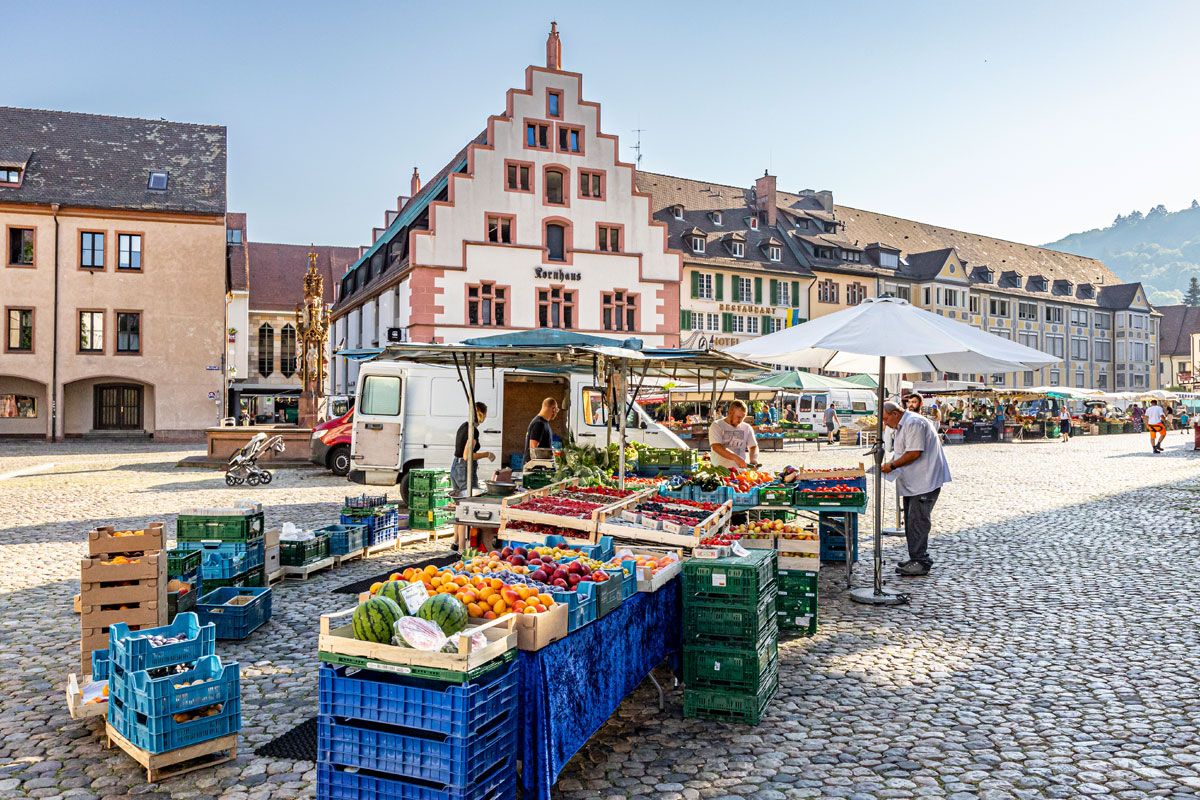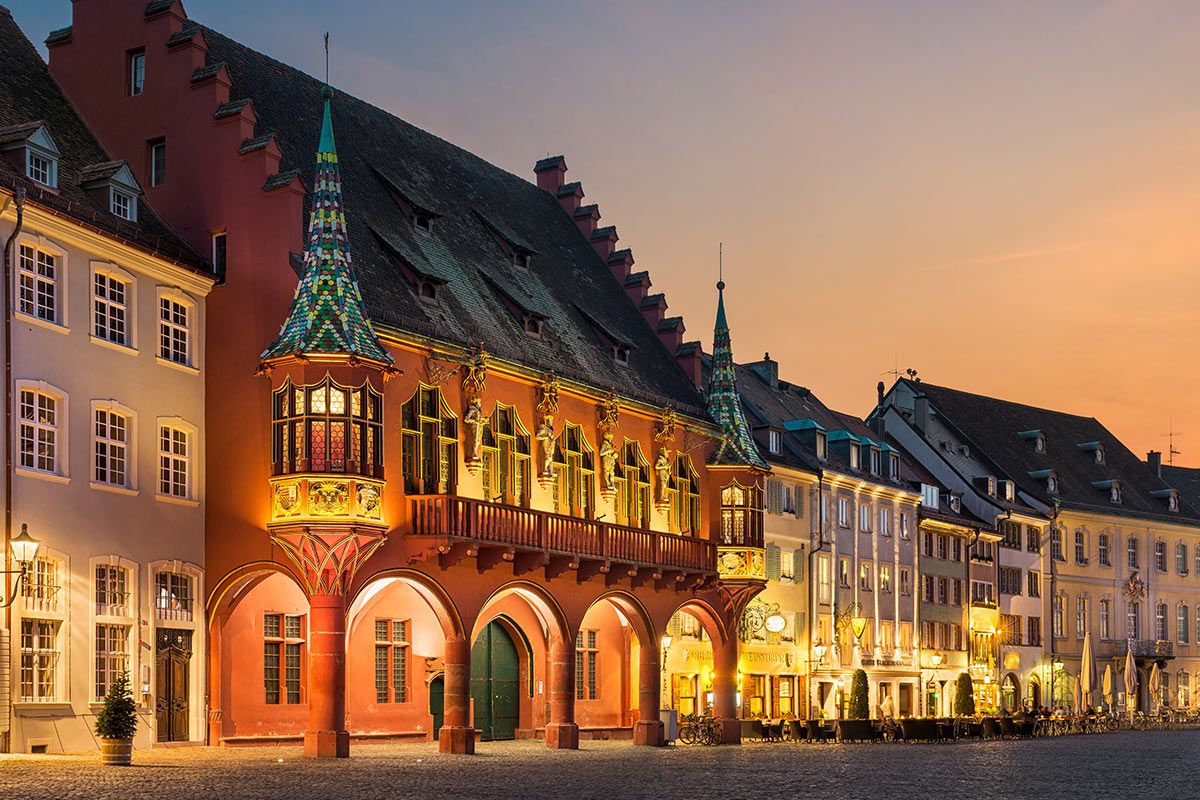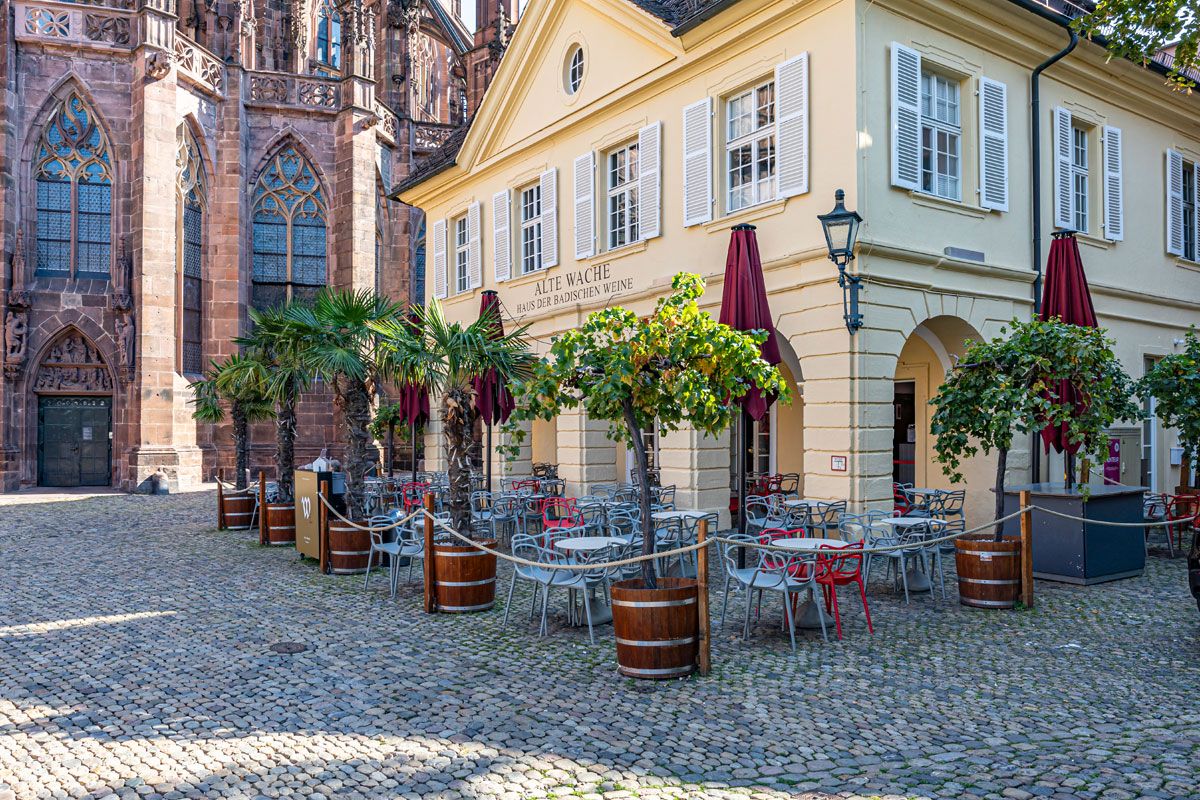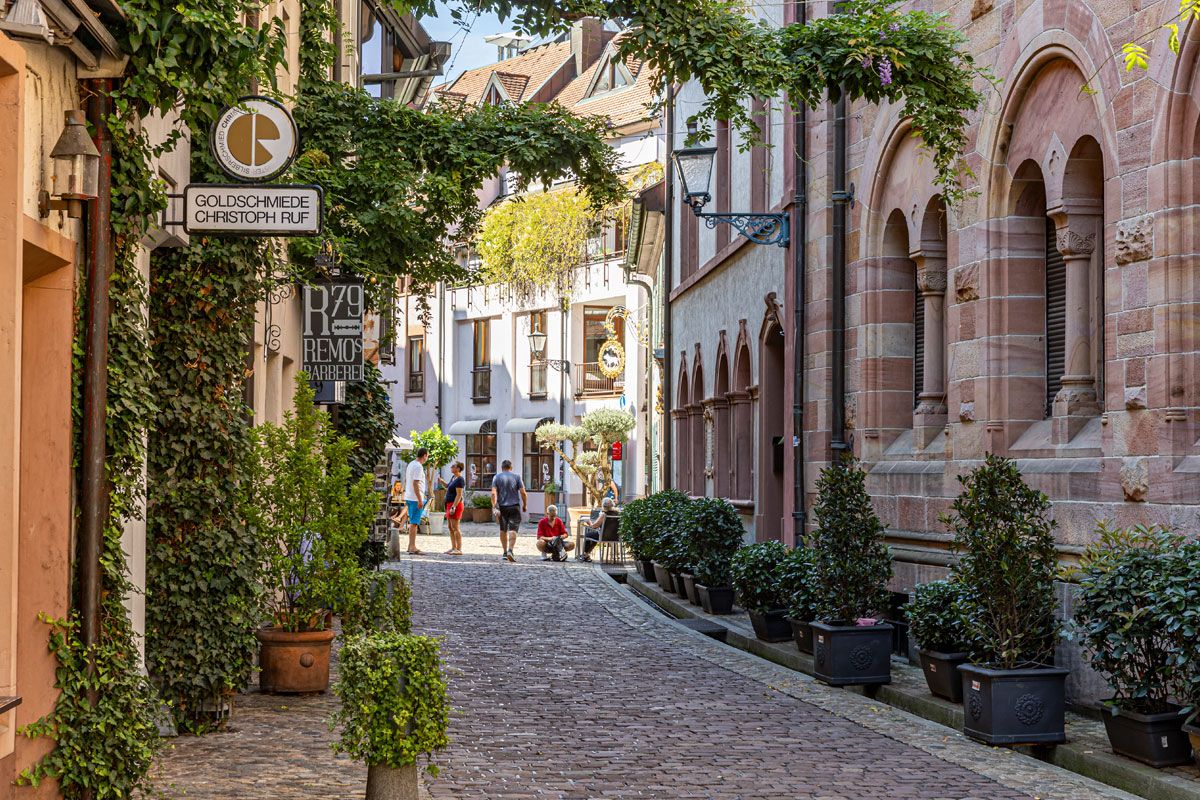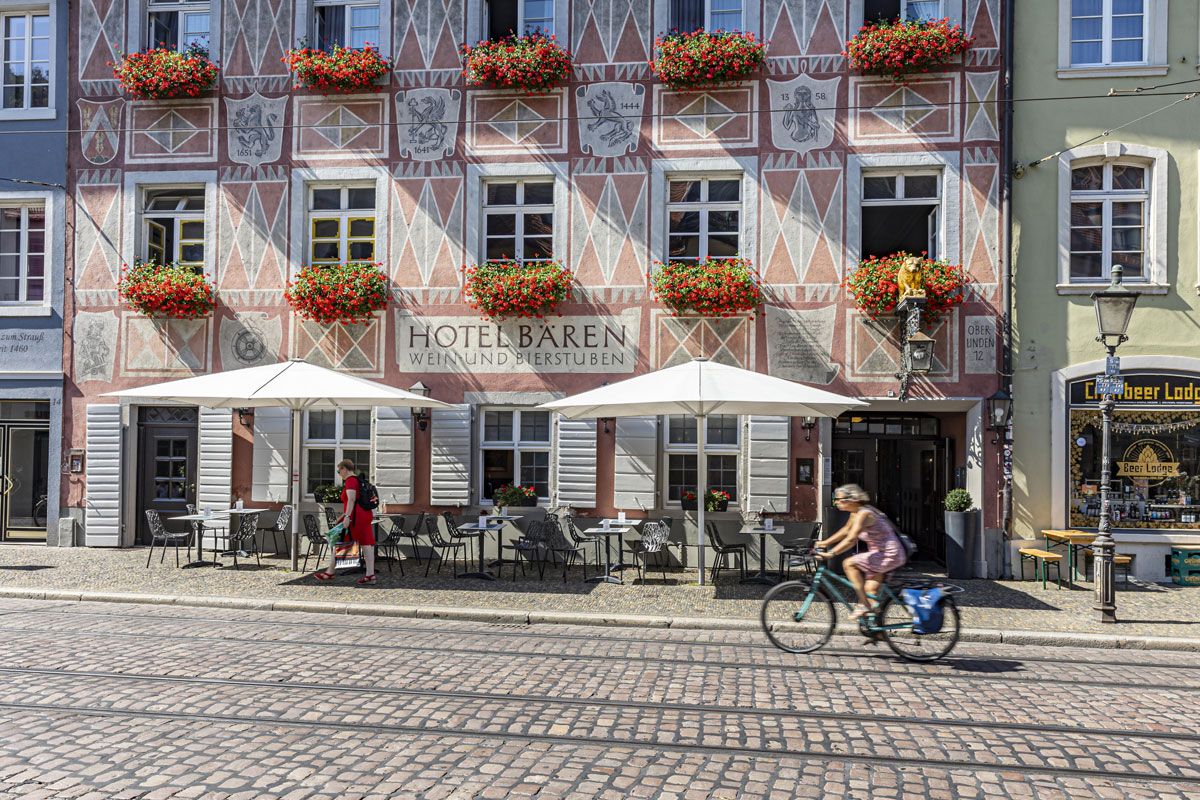Do you have any questions?
We are happy to advise you free of charge!
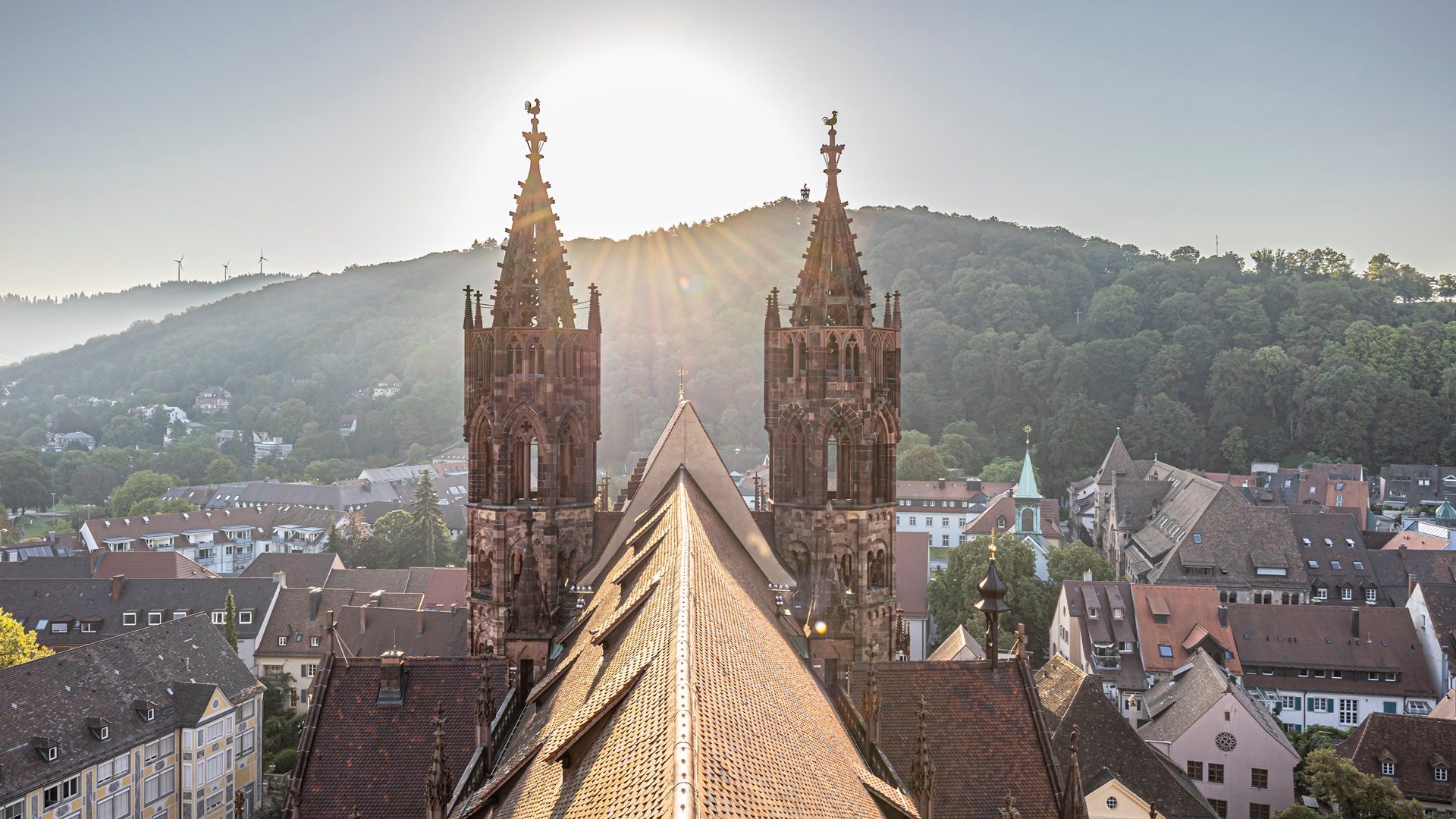
How does Freiburg's old town centre manage to stay so young despite being over 900 years old? This can be explained, for example, by the Bächle , the watercourses that have become a landmark criss-crossing the streets of the old town. They were probably created when the town was founded in 1120, initially for purely practical reasons: for example, the streams were used to bring water for use and fire-fighting into the town. Today, many of the 25,000 or so students in the university city dangle their feet here on warm summer days; children pull their wooden Bächle boats across the water and visitors appreciate the pleasant microclimate here in the sunniest city in the country.
A creative reutilisation that is typical of Freiburg's old town. The city centre is bursting with historic houses: Its cathedral inspires art historians all over the world and even Germany's oldest inn, " Zum Roten Bären", can be found here. But that doesn't mean the old town is old. In Freiburg, historic alleyways such as the street "Konviktstraße" are becoming social media stars, pop-up shops are moving into medieval shops and the Münstermarkt (cathedral market ) - typical of this Green City! - there has long been a vegan version in addition to the traditional sausage.
All this is waiting to be discovered in the winding alleyways and along the charming little streams. And according to urban legend, anyone who accidentally steps into a Freiburg gutter while wandering through the old town will marry a Freiburg native...
